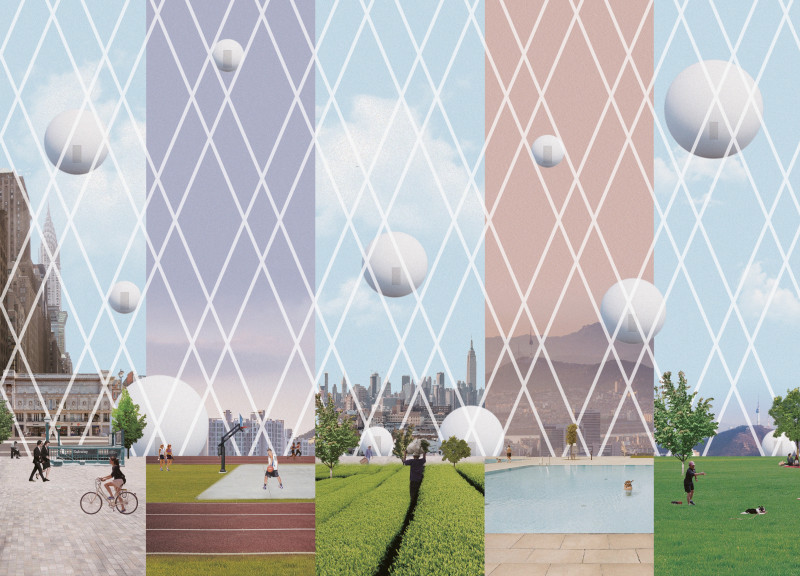5 key facts about this project
The Houselevator project emerges as a novel approach to urban living, integrating verticality and modularity into its architectural framework. This project presents a comprehensive solution to the challenges posed by urban density, functioning as both a housing and community space. The design is characterized by an arrangement of spherical units that connect through a central elevator shaft, facilitating mobility and interaction among residents.
Innovative Structural Design
What sets the Houselevator apart from traditional residential buildings is its focus on modular architecture. The use of spherical units allows for flexible living arrangements that can adapt over time to meet the changing needs of occupants. This modularity not only optimizes space but also provides a unique aesthetic that differentiates it from conventional rectangular forms seen in similar projects. The arrangement of these units promotes community engagement, as residents experience a fluid connection between living spaces and communal areas.
The central elevator functions beyond mere transportation; it serves as a conduit for social exchange, encouraging residents to interact and occupy shared spaces. By situating communal amenities, such as recreational areas and rooftop gardens, throughout the vertical layout, the design ensures that community life is an integral part of the residential experience.
Material Selection and Sustainability
The materiality of the Houselevator reflects both sustainability and durability. Steel forms the structural framework, offering strength while minimizing the spatial footprint. Glass panels enhance transparency and amplify natural light, creating a sense of openness within the residential units. Reinforced concrete is utilized in the foundational elements, providing stability. Additionally, the incorporation of organic greenery is carefully considered, promoting biodiversity and improving air quality within the urban context. This approach aligns with contemporary architectural trends that emphasize environmental responsibility.
The successful integration of these materials enhances not only the physical resilience of the project but also reinforces its aesthetic appeal. The design showcases how modern architecture can prioritize sustainability without sacrificing functionality.
Explore Further
For a more in-depth understanding of the Houselevator project, including architectural plans, sections, and innovative design ideas, the presentation offers valuable insights. Engaging with these elements will deepen your appreciation for the architectural concepts and functional strategies employed in this forward-looking design.






















































